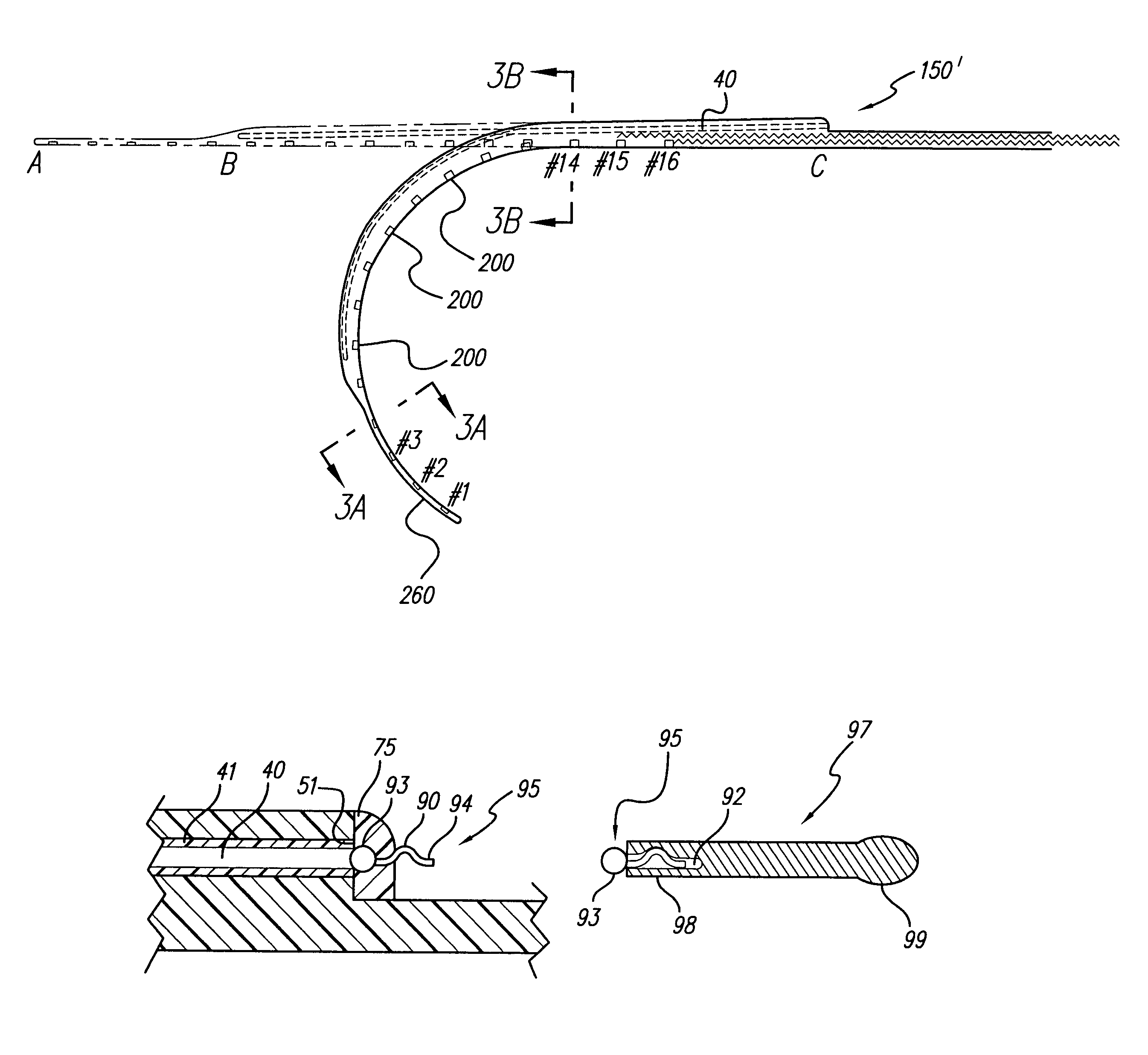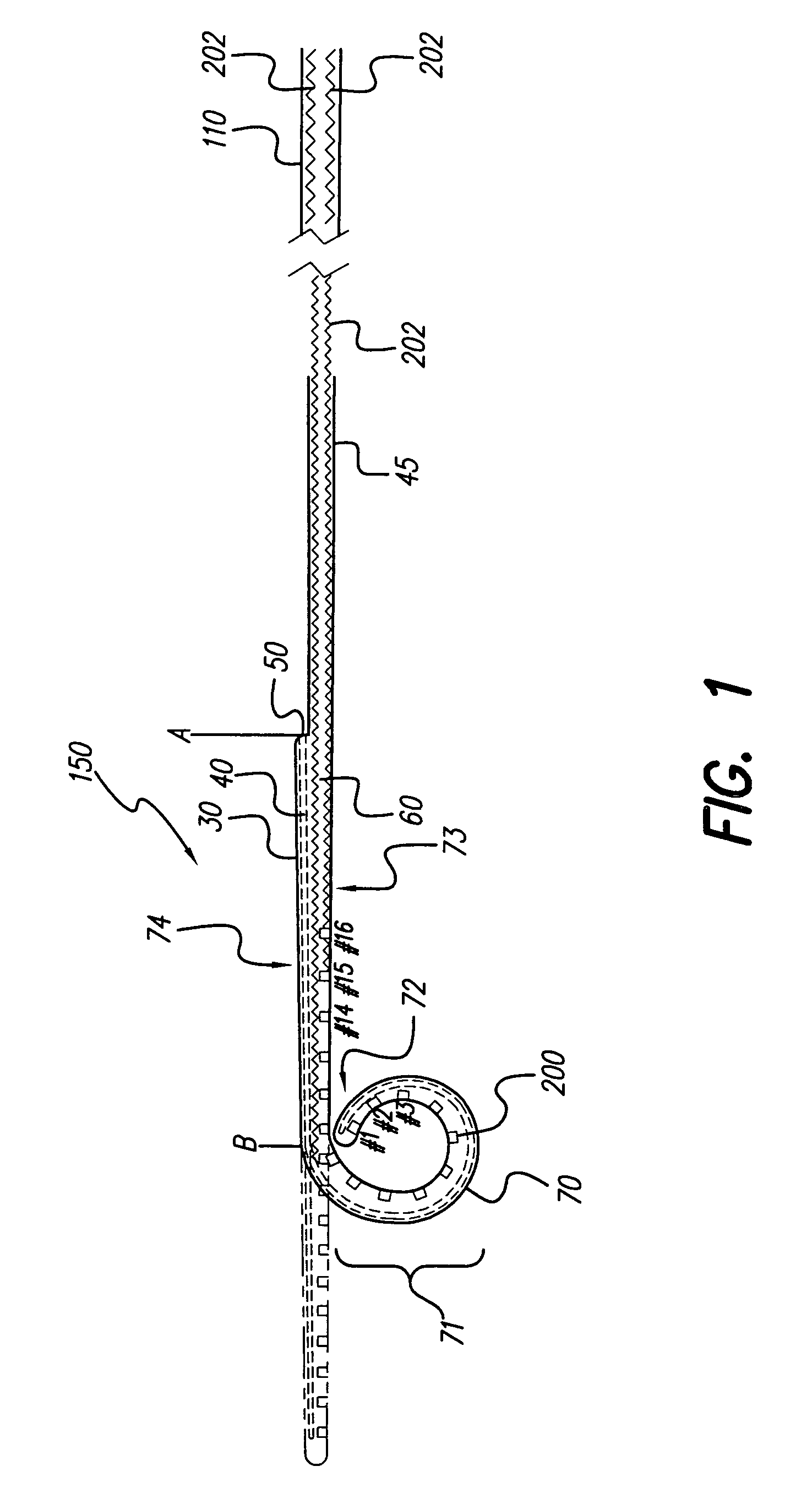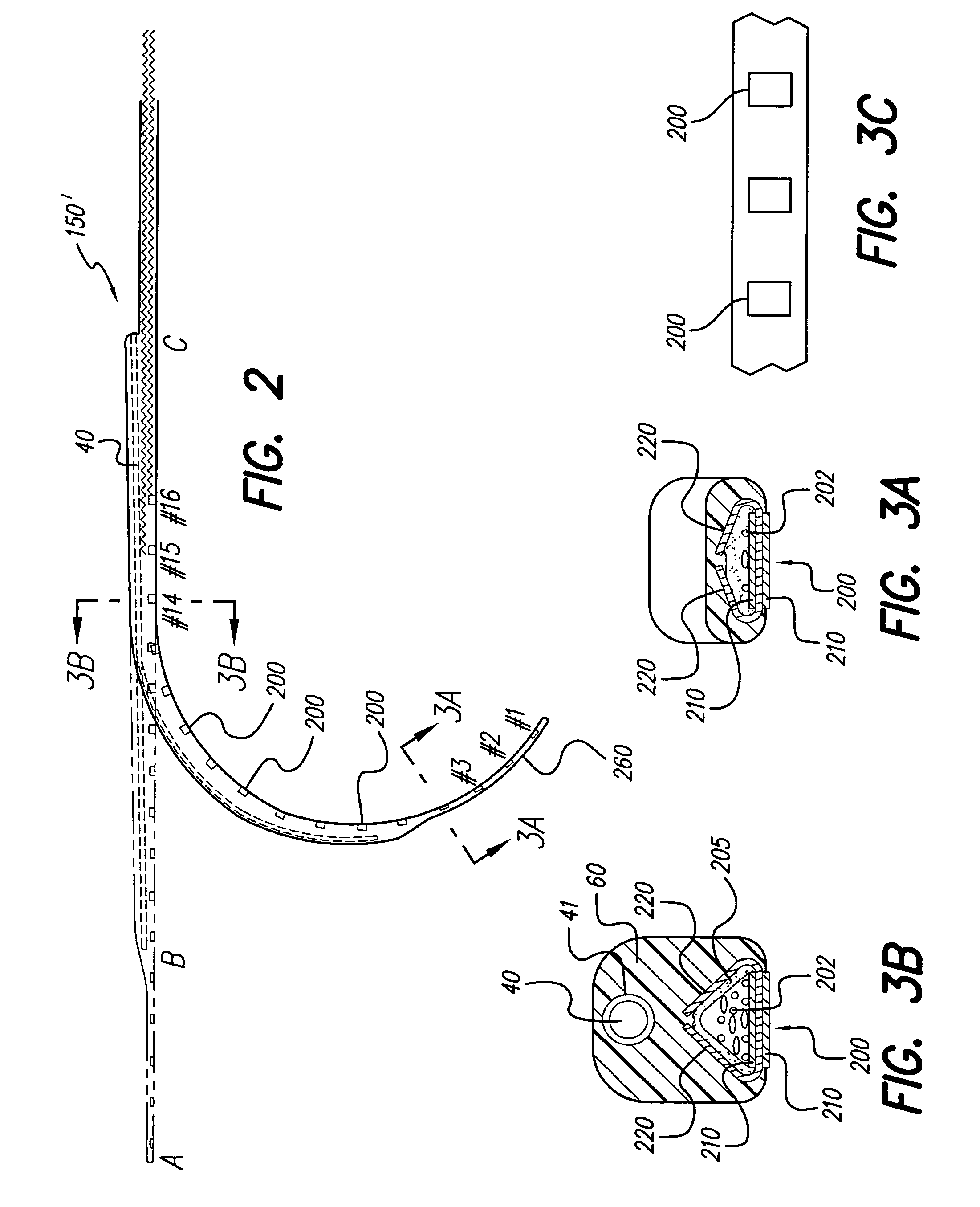Cochlear implant electrode and method of making same
a cochlea implant and electrode technology, applied in the field of implantable stimulation devices, can solve the problems of coil wires not being compactly bundled, more susceptible to bending fractures, etc., and achieve the effects of preventing super-flexibility, facilitating conformation to curvature, and increasing stiffness
- Summary
- Abstract
- Description
- Claims
- Application Information
AI Technical Summary
Benefits of technology
Problems solved by technology
Method used
Image
Examples
Embodiment Construction
[0061]The following description is of the best mode presently contemplated for carrying out the invention. This description is not to be taken in a limiting sense, but is made merely for the purpose of describing the general principles of the invention. The scope of the invention should be determined with reference to the claims.
[0062]The cochlear electrode of the present invention may be used with an implantable multi-channel pulse generator, e.g., an implantable cochlear stimulator (ICS) of the type disclosed in U.S. Pat. No. 5,603,726, incorporated herein by reference in its entirety or with other suitable stimulators. It is to be understood, however, that although a cochlear lead is used as an exemplary context, the lead of the present invention, including the method of manufacturing, may be applied to other medical applications.
[0063]FIG. 1 shows one embodiment of the lead 150 made in accordance with the present invention. In a cochlear application, the lead 150 has an outer (l...
PUM
 Login to View More
Login to View More Abstract
Description
Claims
Application Information
 Login to View More
Login to View More - R&D
- Intellectual Property
- Life Sciences
- Materials
- Tech Scout
- Unparalleled Data Quality
- Higher Quality Content
- 60% Fewer Hallucinations
Browse by: Latest US Patents, China's latest patents, Technical Efficacy Thesaurus, Application Domain, Technology Topic, Popular Technical Reports.
© 2025 PatSnap. All rights reserved.Legal|Privacy policy|Modern Slavery Act Transparency Statement|Sitemap|About US| Contact US: help@patsnap.com



